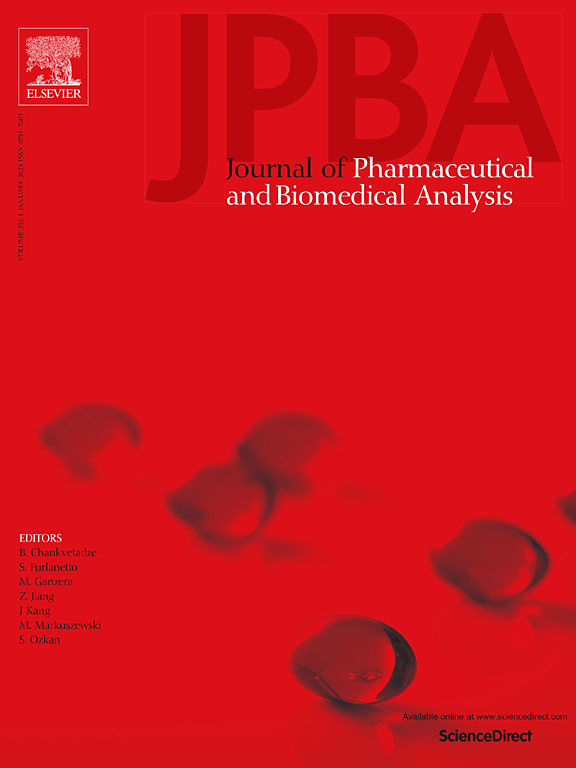LC-MS/MS method for the simultaneous quantification of thiafentanil and naltrexone in bovine muscle, liver and kidney
IF 3.1
3区 医学
Q2 CHEMISTRY, ANALYTICAL
Journal of pharmaceutical and biomedical analysis
Pub Date : 2025-01-30
DOI:10.1016/j.jpba.2025.116711
引用次数: 0
Abstract
Thiafentanil is a µ-opioid agonist used for the chemical immobilisation of a variety of ungulate species and is antagonised by the administration of naltrexone. The potential for these ungulates to be hunted for consumption by humans or predators raises concerns of drug residues in animal tissues. No analytical method to quantify tissue residue concentrations of thiafentanil has been previously reported. This research developed an LC-MS/MS method to quantify thiafentanil in bovine muscle, and both thiafentanil and naltrexone in bovine liver and kidney matrices. The analytical method was applied to quantify tissue residues in samples collected from goats 1, 2, 3, and 6 days post thiafentanil administration. The assay was validated over the calibration range 6.25–200 ng/mg for thiafentanil in muscle, and 3.13–400 ng/mg for thiafentanil and 57.8–7400 ng/mg for naltrexone in liver and kidney. No residues above the lowest limit of quantification were detected in the injection site, longissimus dorsi muscle, liver or kidney samples collected from the goats. The reported analytical method and residue depletion data provide a foundation for future thiafentanil and naltrexone residue depletion studies in wildlife species.
求助全文
约1分钟内获得全文
求助全文
来源期刊
CiteScore
6.70
自引率
5.90%
发文量
588
审稿时长
37 days
期刊介绍:
This journal is an international medium directed towards the needs of academic, clinical, government and industrial analysis by publishing original research reports and critical reviews on pharmaceutical and biomedical analysis. It covers the interdisciplinary aspects of analysis in the pharmaceutical, biomedical and clinical sciences, including developments in analytical methodology, instrumentation, computation and interpretation. Submissions on novel applications focusing on drug purity and stability studies, pharmacokinetics, therapeutic monitoring, metabolic profiling; drug-related aspects of analytical biochemistry and forensic toxicology; quality assurance in the pharmaceutical industry are also welcome.
Studies from areas of well established and poorly selective methods, such as UV-VIS spectrophotometry (including derivative and multi-wavelength measurements), basic electroanalytical (potentiometric, polarographic and voltammetric) methods, fluorimetry, flow-injection analysis, etc. are accepted for publication in exceptional cases only, if a unique and substantial advantage over presently known systems is demonstrated. The same applies to the assay of simple drug formulations by any kind of methods and the determination of drugs in biological samples based merely on spiked samples. Drug purity/stability studies should contain information on the structure elucidation of the impurities/degradants.

 求助内容:
求助内容: 应助结果提醒方式:
应助结果提醒方式:


